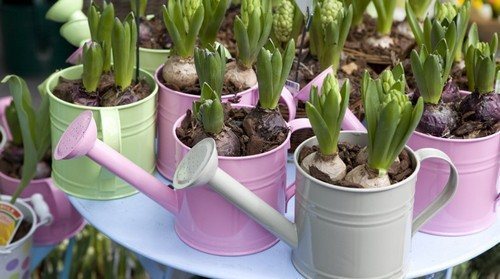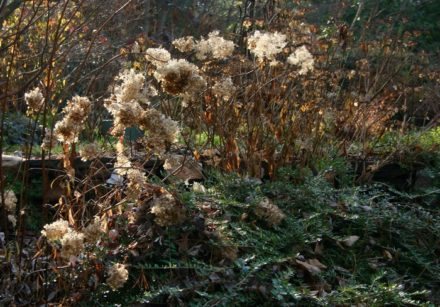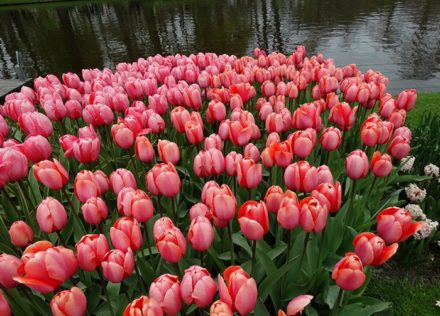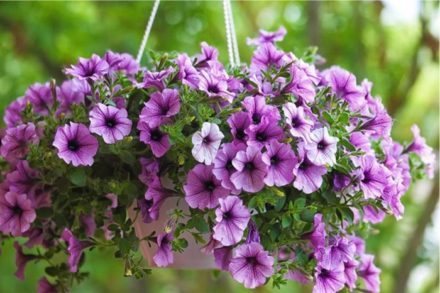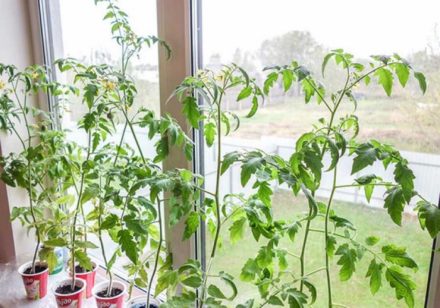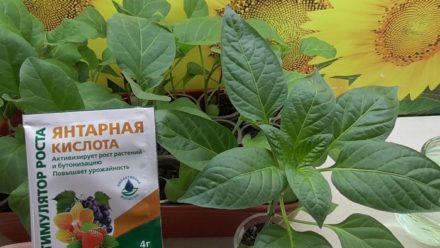Hyacinth is a garden bulbous flower that is often given as a gift on March 8th. Forcing bulbs is convenient because it makes it possible to obtain flowering at a certain time, which is what producers take advantage of. After the hyacinth has bloomed, it can be transplanted into the garden, waiting for the arrival of warmth. While the flower is in the house, it needs to be provided with suitable care. A few tips will help you find an approach to the plant.
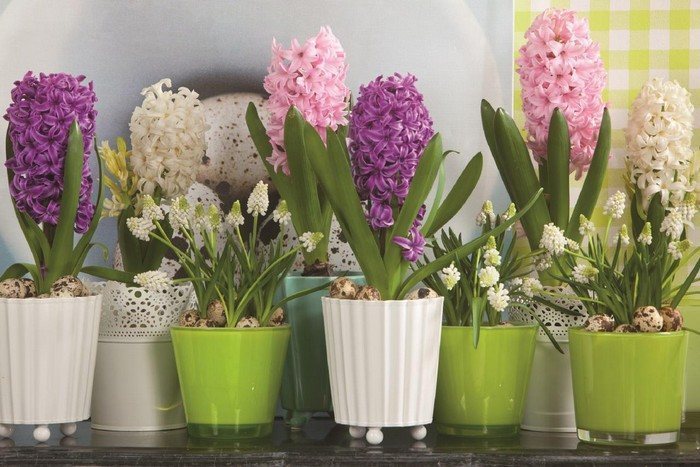
Transplanting into a larger container
In European countries, bulbous flowers are perceived as disposable. At the end of flowering, the bulbs are mercilessly thrown away. This approach is not typical for Russian women. Our growers will always give the plant a chance to live if this can be done.
If you want to save the hyacinth bulb for further flowering after the petals have dried, transplant the flower into a larger pot. The container is filled with nutritious loose soil that allows moisture to pass through well. Transplantation is carried out using the transshipment method after preliminary watering. In a large container, the bulb will have the opportunity to grow and even divide.
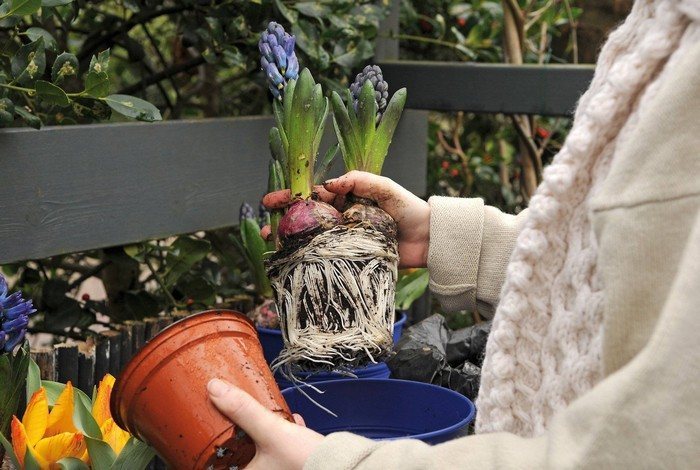
Watering hyacinth after flowering
After the inflorescence has dried, the peduncle must be cut off, leaving a stump 3-4 cm high. Then they continue to care for the hyacinth, as before flowering, making minor adjustments to the care. Watering should become less voluminous and more rare. However, as long as the plant has leaves on it, it needs moisture.
Hyacinth leaves do not need to be trimmed until they turn yellow. The color change process will occur gradually. When most of the leaves turn yellow, stop watering, because the above-ground part of the plant has died, transferring all the valuable substances to the bulb sitting in the ground. Usually this process is completed by mid-May.
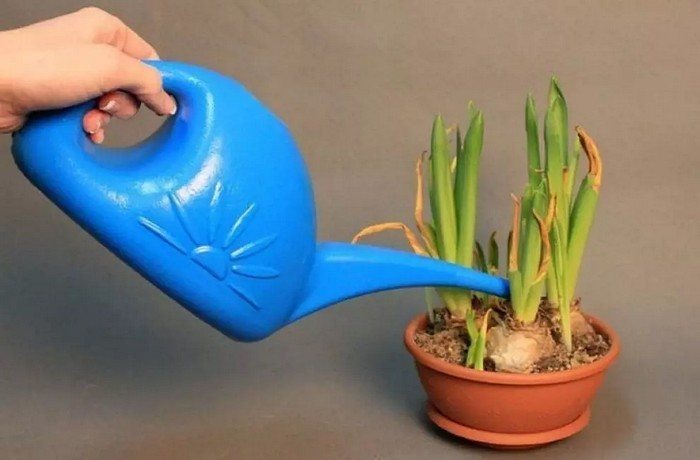
Suitable maintenance conditions
Since hyacinth is an outdoor flower, it is not entirely comfortable at home. The plant is too hot indoors, and it also experiences a lack of light. It is better to place the pot with hyacinth closer to the window glass, where the lighting is maximum. If the room is hot, you need to open the window frame, lowering the temperature in the room and providing the flower with an influx of fresh air.
After all the leaves have turned yellow, they are cut off. Now you need to remove the bulb from the pot for further ripening and transplanting into open ground. There is no need to water the hyacinth before this, the dry soil will fall off the bulb itself. Getting rid of wet stuck soil, you can damage the bulb scales, and this is undesirable.
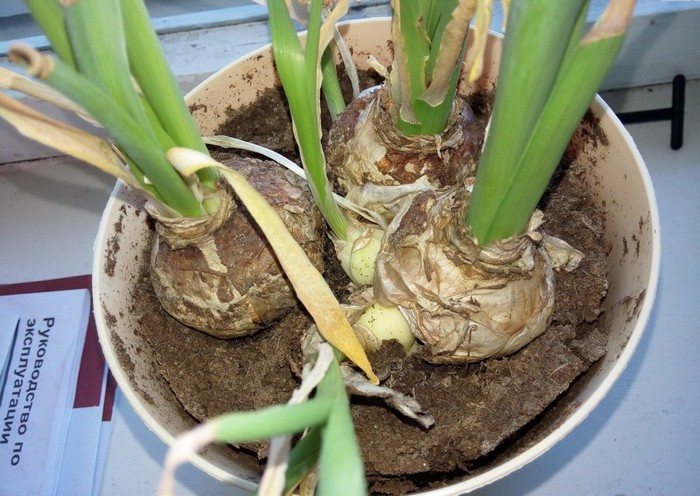
Storing bulbs before planting
Before storing, the bulb must be dried at a temperature of +18-22 °C in a dark place with air access. You can dry it on the floor under the bed, or put it on a shelf in the pantry. After 5-6 days, the bulb is placed in a paper bag or cardboard box and kept at room temperature until autumn planting.
To be on the safe side, you can treat the bulb in a solution of the drug "Maxim". This fungicide will protect it from rot and fungal diseases. The solution is prepared from 4 ml of the drug per 2 liters of water.The onion is soaked in the composition for 30 minutes, after which it is dried and stored. After 2.5-3 months, the dormant period of the bulb will end, then it can be planted in the ground.
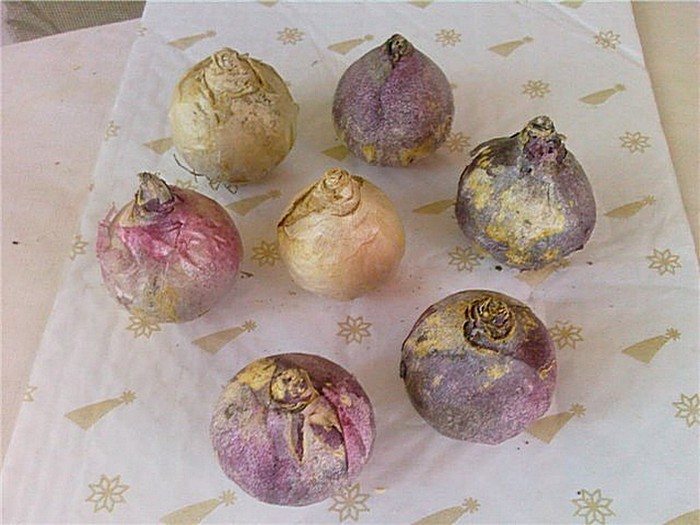
Planting hyacinth in the ground in autumn
Hyacinth is planted in a flowerbed at the border between September and October, choosing a dry, warm day. Before the cold weather arrives, the bulb will have time to take root, but will not germinate, which will give it the opportunity to successfully survive the winter. The timing of planting hyacinths coincides with planting winter garlic.
The bulbous flower should be planted in a sunny place where water does not stagnate. The land is pre-fertilized with organic matter (peat, humus, compost) and mineral fertilizers (superphosphate, potassium sulfate). If the soil is clayey, it is improved by adding sand. Before planting, the bulbs are pickled by placing them in a medium-strength solution of potassium permanganate for half an hour and dried.
Planting is carried out at a depth equal to triple the height of the bulb. Sand is added under the bottom of the onion to prevent rotting. The interval between plants should be 10-12 cm, depending on the size of the bulb and the desired planting density (if there are several bulbs).
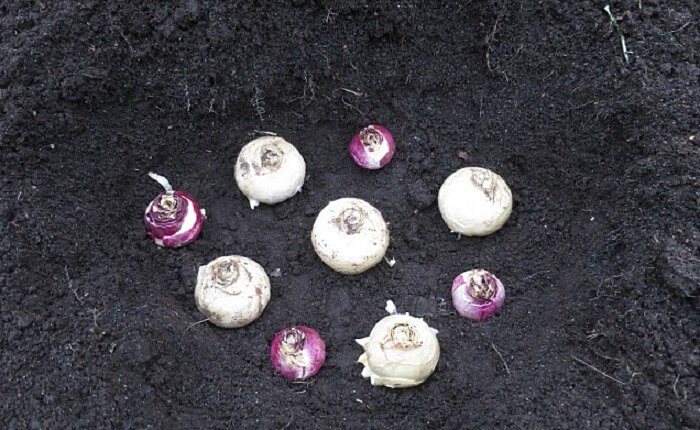
By planting donated hyacinths in the ground, in a few years you will be able to get a blooming lawn. The bulbs of the crop willingly divide in the ground, forming several children annually. And this will begin with proper care of the flower in the house. By the way, you can give hyacinth to yourself, its price is low. Together with a flowering plant, joy and spring mood will come to the house.


